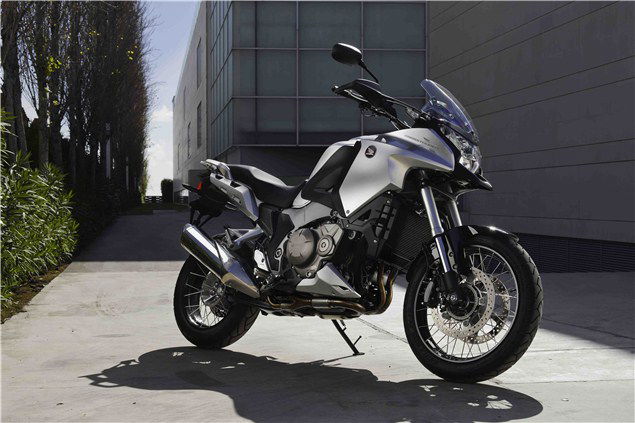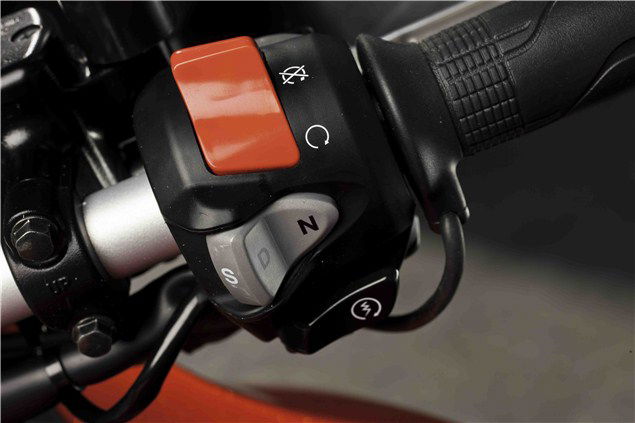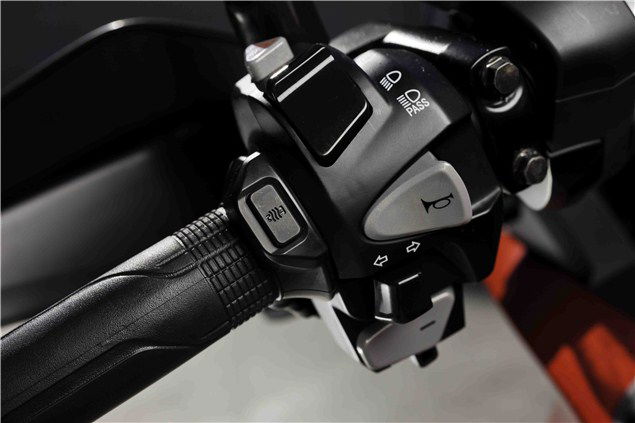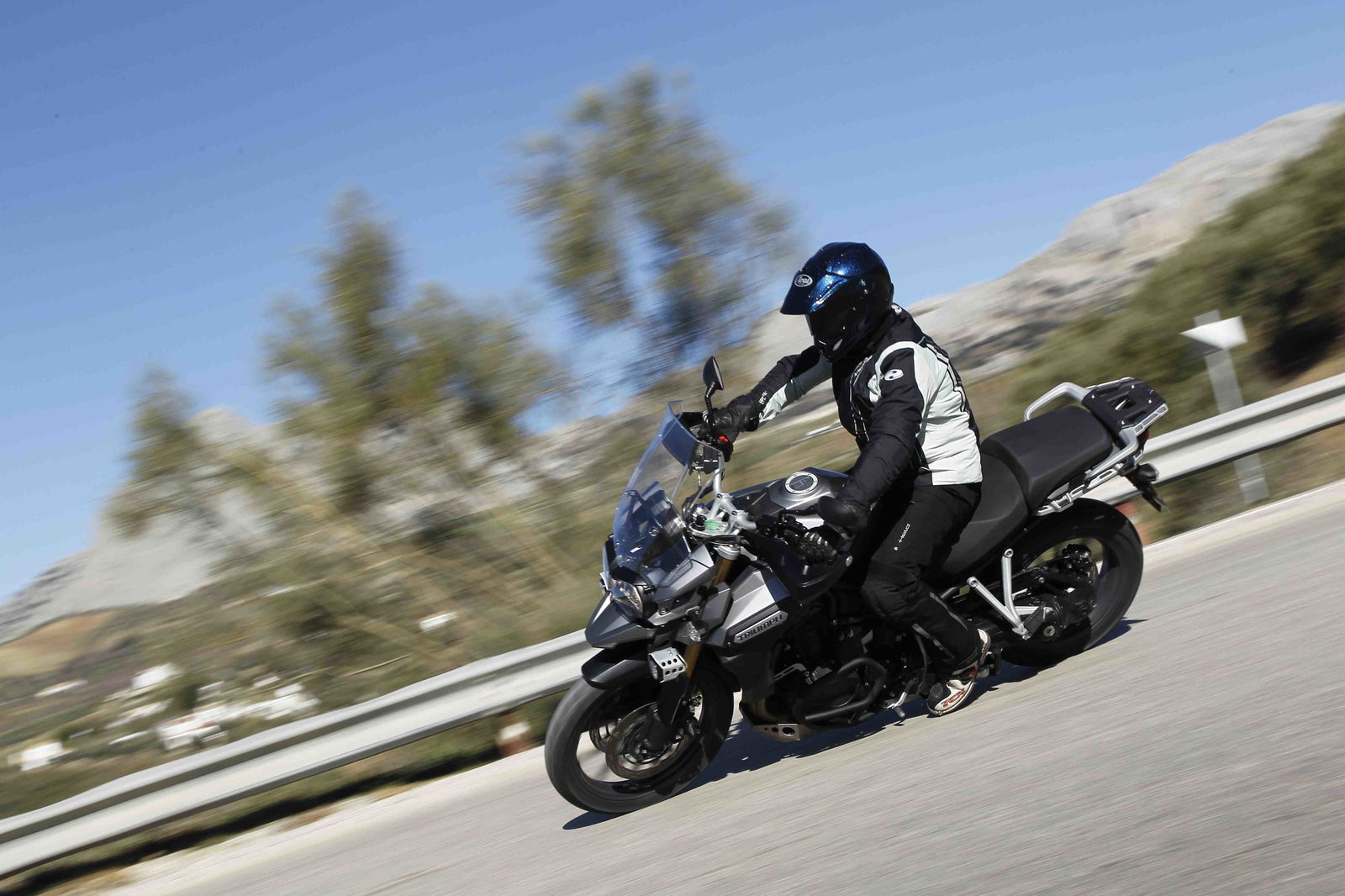First Ride: Honda Crosstourer DCT
Flappy (paddle) future

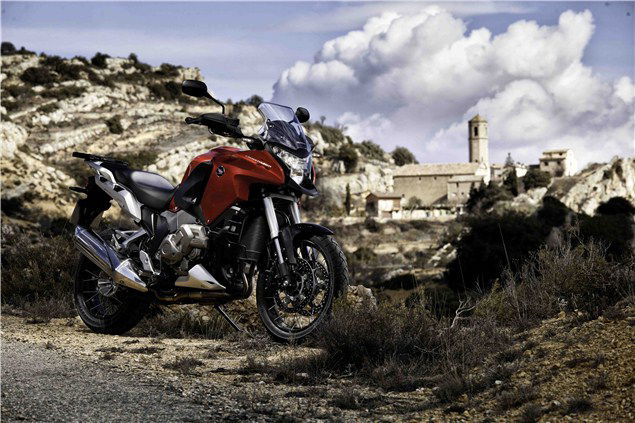
For the last half of the day’s road riding on the Crostourer launch I jumped on the DCT version. It’s easy to spot as it doesn’t have a clutch lever and there’s a weird handbrake contraption on the left hand handlebar.
I’ve ridden the DCT system on the VFR1200 at its launch in Japan in 2009 and for a brain-out lap of the TT circuit while everyone else seemed to be having their tea on Mad Sunday. I liked it – maybe even preferred it to the standard gearbox – for the way it kept the bike settled in fast corners when you’re shifting up.
The downsides? Well, once you'd overridden the auto mode by making a manual selection, the system stayed in manual.
Can I talk cars for a brief moment? I think it’s relevant. Sorry an' all that...
Audi/VW group have really moved twin clutch technology on a pace over the past few years. Their stunningly good DSG system comes in six or seven speed guises and is so good it makes you wonder why people would want a clutch pedal in their car ever again.
DSG can shift gears in either direction in four hundredths of a second. Try that in a conventional car with a synchro ‘box and you’d end up with a foot-well full of broken gears and a bill the size of Greece's defecit. This DSG gearbox turns the Golf Gti into an amazing car (as opposed to a good car) and makes Audi’s RS3 that I’ve been driving this week utterly amazing.
Honda’s DCT system is probably even more amazing in that not only have the engineers managed to replicate the spilt second shifts but the way it’s packaged is a masterstroke of micro-engineering. The latest phase-2 DCT system adds just ten kgs to the weight of the bike and very little extra bulk.
The Honda principle of operation is no different to VW’s. One clutch takes responsibility for the even gears (2nd, 4th and 6th) whilst the other one looks after 1st, 3rd and 5th. The clutch baskets run cheek to cheek with one output shaft running within the other hollow one. Neat. This dividing of gear responsibility allows the selector forks to pre-engage the next gear, for instance, if you’re in third gear, second and fourth are sat there, engaged, and ready to go the moment you either hit the flappy paddle or the auto-function deems a shift necessary – up or down.
And because there’s always a gear ready to rumble it means the transition from one to another is almost impossible fast – and smooth. It’s far, far more sophisticated than a conventional sequential gearbox. That’s a fact.
Now - in this second incarnation - the DCT will automatically return to auto mode after a manual input has been made – coincidentally (?) just like DSG does. So you can go barrelling into a tightening corner in full auto-mode and to scrub a bit more speed off you can go –BANG – BANG - backshift two on the left paddle to increase your engine braking and then when you get back on the gas on the way out of the turn the system will revert to full auto-mode and make your upshifts for you. Up and down shifts are now faster and smoother than the previous set-up.
There are two full-auto modes. D and S. D is just ‘drive’ and S is (obviously) ‘sport’. In D mode the ECU will detetct how aggressively you’re riding and , if necessary, switch to a second, sportier map. Like nearly all the car systems on the market, the left paddle is for down and the right for up shifts. It’s intuitive – it takes just a few metres to get used to it.
But is it enough to convert a clutch junky onto the dark side? Personally speaking, yes, it is but our group was split in opinion with one old hack actually admitting that he liked changing gears and changing gears was all part of his biking fun. Fair enough, I suppose. Whatever bloats your float.
For me, DCT is like all the best bits of a quick shifter (you can up-shift even with the throttle cables stretched tight) and – it’s quite important this bit – if your brain is as small as mine DCT frees up a useful percentage of brain matter to plan your route ahead and to be more aware of your surroundings. With less to think about (gears and clutches) this really is true. It just makes riding (fast or slow) easier and smoother.
If, like me, you’ve been riding for over forty years there is a downside to DCT, though. I tend, through ingrained habit, to ride the clutch at low speeds – just two fingers – but it’s enough to smooth out the transition between positive and negative throttle loadings. Anyone who’s ridden an early Ducati Monster will know what I mean – at low speeds keeping some pressure on the clutch cable just lets you smooth the whole job out, especially if you’ve got a passenger perched high behind you.
With DCT you obviously can’t do that which is what made me realize how much I was having to concentrate to ride smoothly at low speeds. Personally, for DCT Phase 3, I’d like a different throttle twist-grip aspect ratio where the initial openings were lower geared – like how KTM sorted out the savage throttle response of their RC8R. It’d just make the Crosstourer much easier to ride smoothly at dawdling pace.
Other than that minor niggle I think Honda have come up trumps with this new twin-clutch gearbox and it actually makes the Crosstourer a better bike with it fitted – it suits the bike - particularly the suspension. With so much softly sprung, softly damped long-travel suspension the ultra-rapid, ultra-smooth up-shifts don’t unsettle the bike at all, even if you’re toe scraping your way through a three-figure sweeper. As we were.
So, bag your prejudices and leave them at the front door. Here is a gearbox that makes a really good bike truly great. Don’t fancy the idea of changing gears manually with your fingers? Fine. Honda have a foot pedal option for traditionalists unwilling to take the whole plunge.
If you’ve ordered a Crosstourer with a manual gearbox feel free to kick yourself now… DCT adds £850 to the Crosstourer's £11,475 list price.
